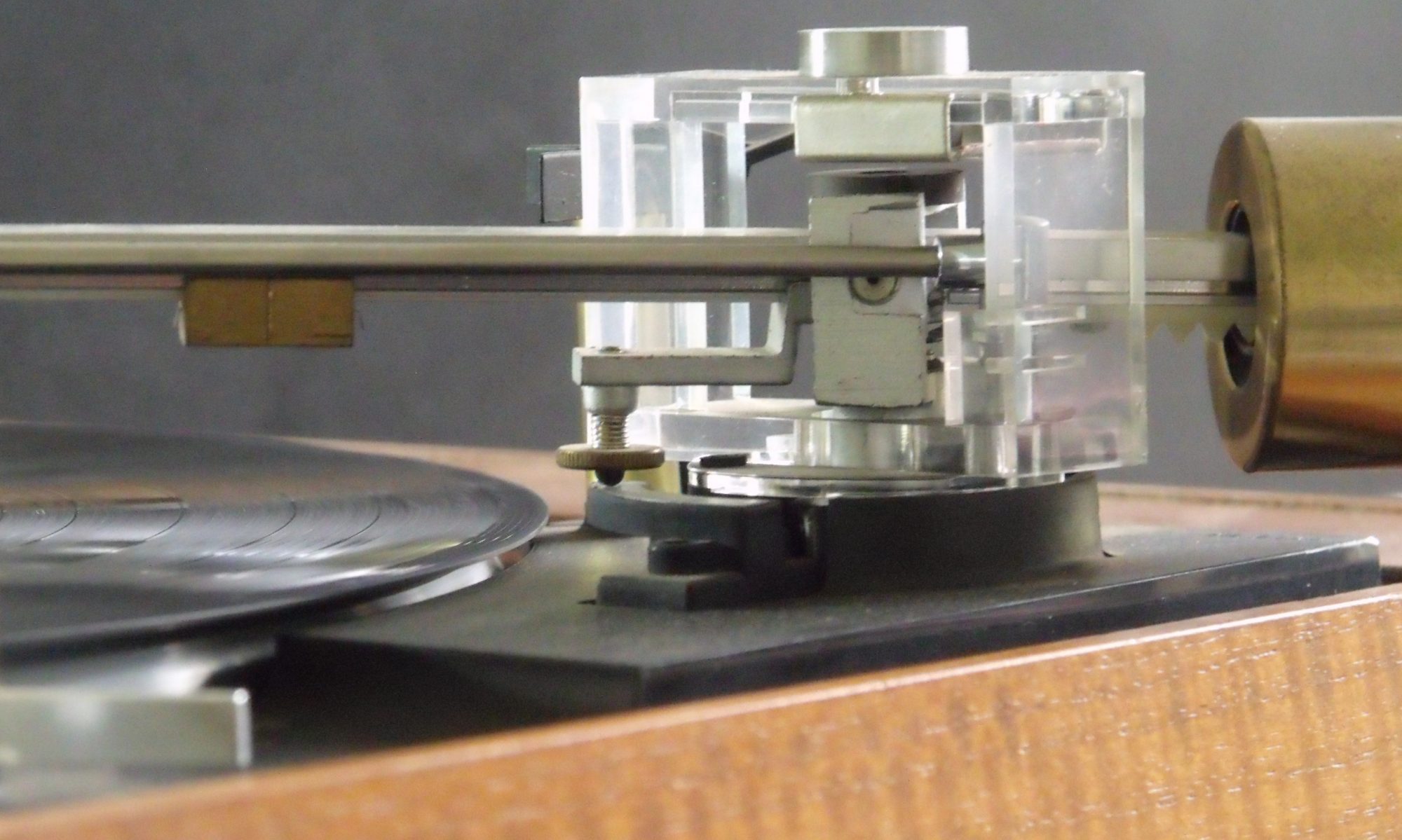Earlier this summer I bought a box of a dozen or so 8 track cartridges in the expectation that at some point I would get a player.
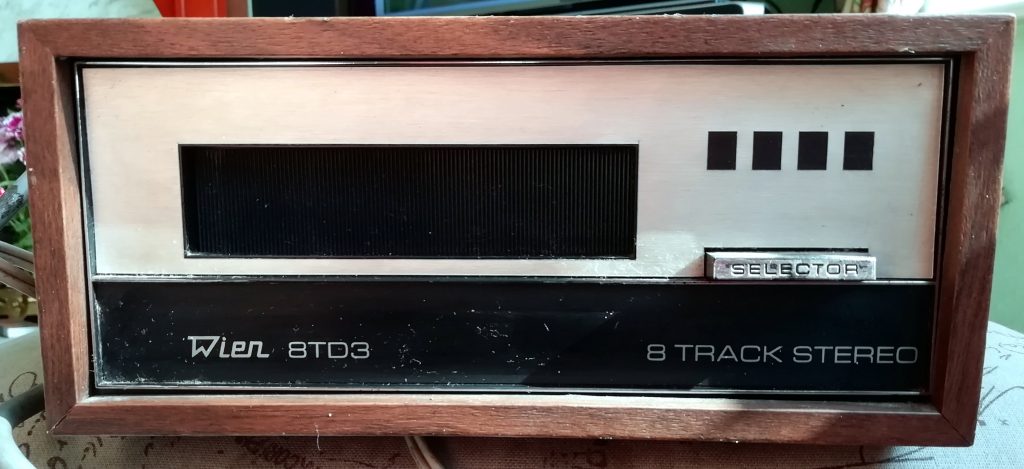
This was mine for just £3. No surprise that it doesn’t work. Let’s fix that.
The 8 track cartridge was designed primarily for use in cars. Back in the 60’s and 70’s they were standard equipment in a lot of american cars. The design lent itself to easy use in a moving vehicle. Domestic players like this are less common. This automotive origin means that Vintage car owners want a period correct audio system and drives a thriving trade in the car market for tapes and players. You can pay top cash for the obvious big artists of the sixties like the Beatles and the Stones.
This example is a Wien. I have seen almost identical units branded Monarch, Elizabethan.
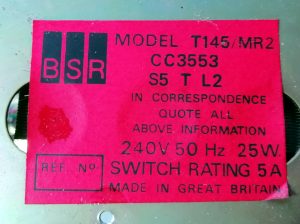
Taking the back off revealed this sticker. It’s a T145/MR2, made by Birmingham Sound Reproducers. BSR are better known for their turntables, which found their way into millions of record players in the 60’s, 70’s and 80’s.
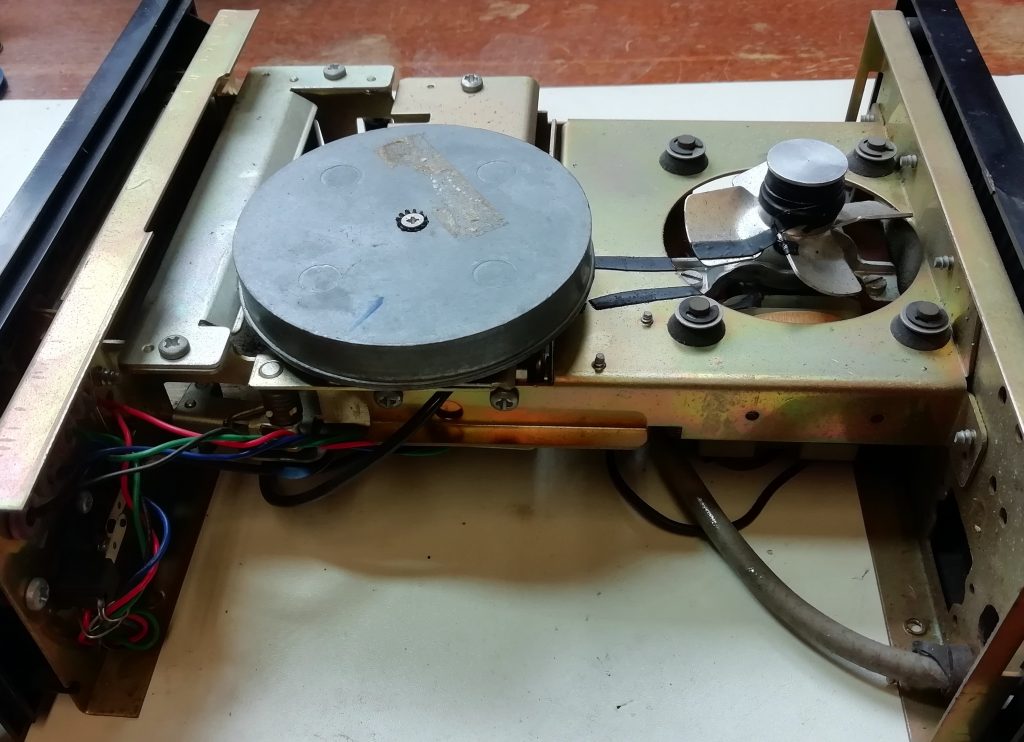
A quick look inside reveals the first real problem. The drive belt has dissolved. This horrible sticky black mess took hours to remove with IPA and elbow grease. I ordered a replacement belt and in the meantime tested it with a large elastic band from the stationary draw. Mechanically all seems fine, if a little dirty. A thorough clean was the order of the day.
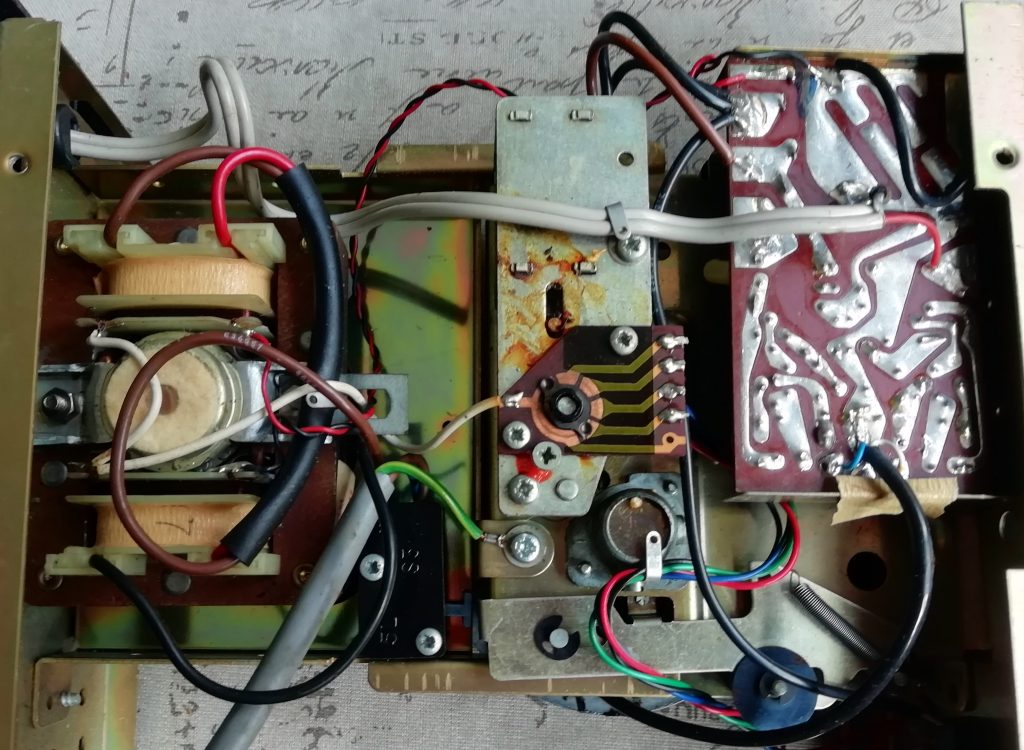
Looking at the under side we can see the motor on the left. This is a substantial shaded pole motor with an extra winding to provide power for the amplifier circuit on the right. I replaced both the mains and signal cables which were a bit tatty. The latter sported an old school 5 pin din plug on the other end. It’s RCA phono plugs now.
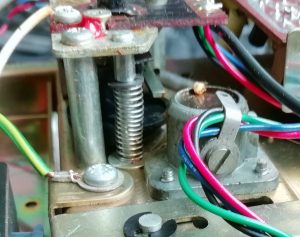
These units are quite simple in operation. On/off is achieved by inserting or removing the tape. The only other control is the “Selector” switch. Pressing this triggers the solenoid and cam mechanism shown here. On the other side is the playback head, which moves across the tape with each click to select a different pair of tracks on the tape. Four pairs of tracks (stereo) give you the four programs.
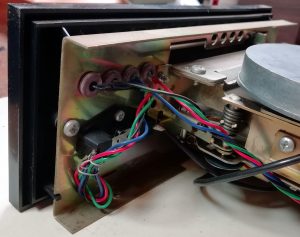
Indicator lights on the front panel show which program you are on. these lights are driven by the wafer switch, visible in the middle of the bottom view picture.
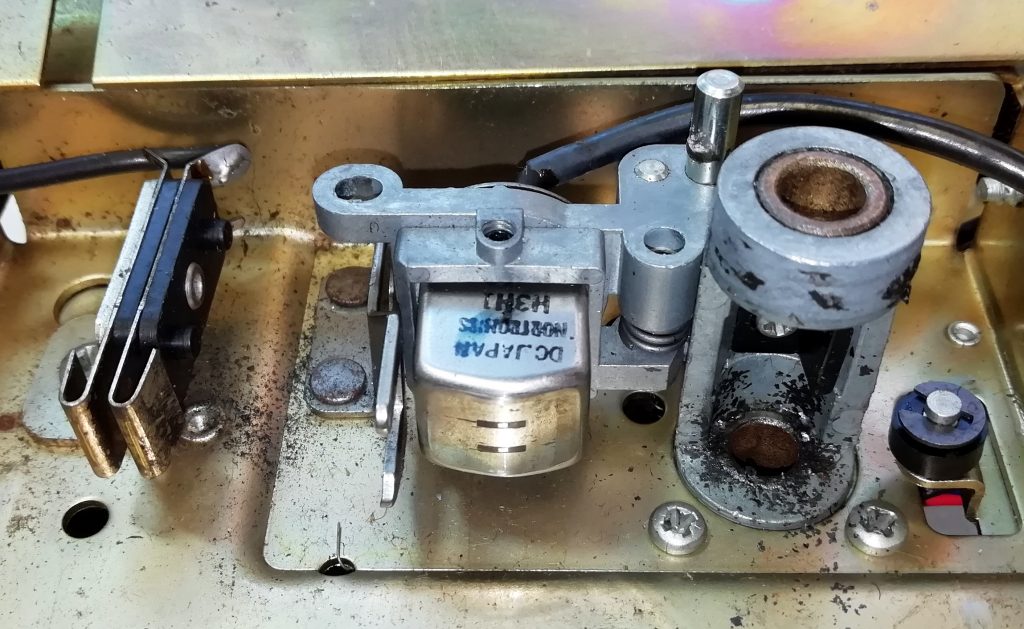
The business end of any tape player is the head, here in the middle of the picture. The head can move up and down, traversing the tape to select programs. The capstan and flywheel have been removed for access and cleaning. They would sit in the cylindrical bearing housing on the right. In a reel to reel machine you would expect to see a pinch roller to hold the tape firmly against the capstan so it can be driven along at constant speed. For Cartridge players this is absent, being contained in the tape cartridge. The contacts on the left also operate the program change solenoid. It is triggered when a small piece of metal foil on the tape passes over. This is how the cartridge automatically progresses through the four programs and back to the beginning.
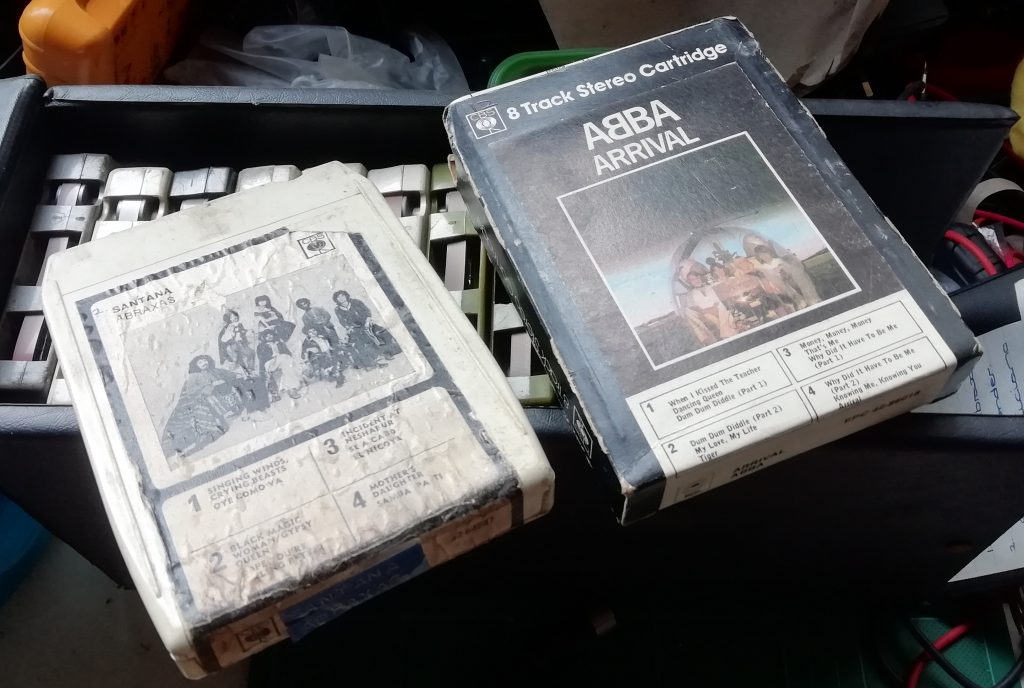
Cleaning up and demagnetising brought the unit back to working condition. About half of my tapes worked straight away. The others needed attention.
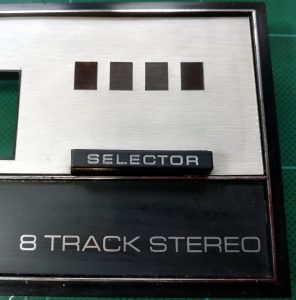
Cosmetically the unit is in good condition for it’s age, but the selector switch paint was a little worn, giving an untidy look. The re-painted switch now has silver lettering against a black background because it was easier to paint.
Performance is actually rather good with a decent tape. This should come as no surprise because it does run at twice the speed of cassette tape. The tape is twice the width, but that confers no advantage because it holds twice as many audio tracks.
Cassette won the day on convenience and ultimately on sound quality. Developments in tape formulation (Chrome, metal etc) never made it into the 8 track and electronic advances such as Dolby were rare indeed. I actually find this unit great fun to use, with a satisfying sound quality even when listening to very familiar material like mike Oldfield’s Tubular Bells
